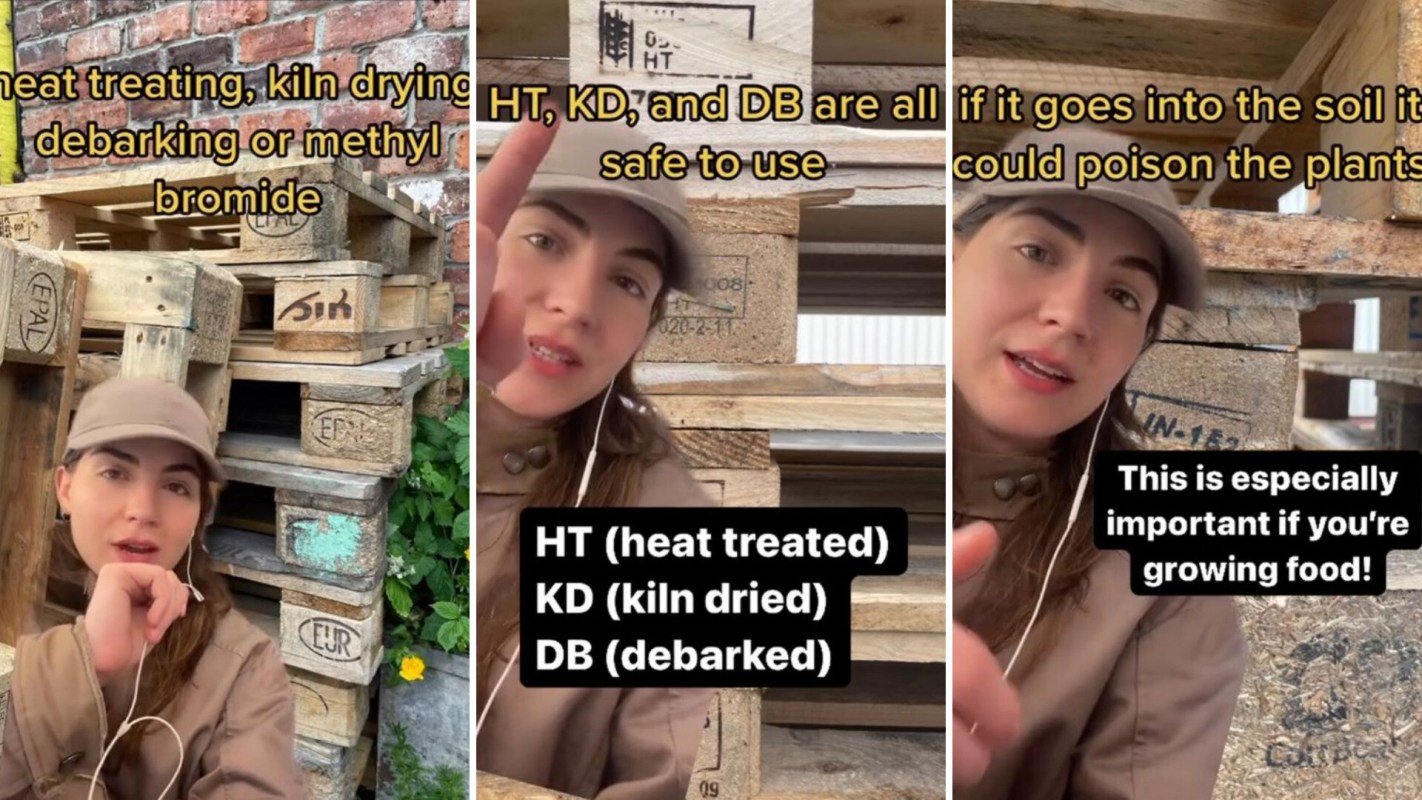Gardening pro Ellen Miles (@octaciachill) recently blew Instagrammers' minds by posting a video explaining that not all wooden pallets are created equally.
"If you [want to] build things out of reclaimed pallets, you need to know this first," she says.
The scoop
In the video, Miles explains that wooden pallets are all treated to help prevent the wood from rotting and breaking down too quickly. There are four main ways that pallets are treated: heat treating, kiln drying, debarking, and methyl bromide.
Heat treatments are pretty self-explanatory. The wood in the pallets is placed in a heat chamber and heated to a certain core temperature for a certain amount of time. This method is used to kill any insects, seeds, or plants that may be carried with the pallet and would cause rot. You can tell if your pallet is heat treated by the "HT" marker on the side of the pallet.
Kiln-dried is similar to heat treatment, but the wood is heated at a much lower temperature for a much longer amount of time in a kiln. This drastically decreases the amount of moisture in the wood (by about 19%). This kills any fungal growth, prevents warping, and keeps the wood from rotting. Kiln-dried wooden pallets are marked with a "KD."
Debarking is done in the processing stage of the pallet and is typically done to make heat treatment easier. The bark of the tree is removed from the wood during processing before being made into pallets. You can tell if your pallet was debarked by a "DB."
Methyl Bromide is a harsh pesticide that is used to fumigate the wood used in some pallets. This is done to kill any insects and plant life left on the wood. Methyl Bromide treated pallets are marked with an "MB" — and you definitely want to stay away.
How it's helping
Knowing how your pallets are treated is incredibly important before cutting in or sanding down that wood. Inhaling the Methyl Bromide treated sawdust could seriously affect your lungs, kidney, and liver.
But it's not just you that is affected by Methyl Bromide. According to the EPA, Methyl Bromide is a class 1 ozone-depleting substance, meaning when it enters our atmosphere, it breaks down our ozone, allowing more ultraviolet radiation to reach the Earth's surface.
It also affects the ground below us. Possibly one of the most popular DIYs to do with a wooden pallet is to repurpose it for your garden. Chemicals like Methyl Bromide can leach into the soil as they begin to break down. This is bad for both the soil and also for the plants in it — especially if your garden bears edible fruits or vegetables.
What everyone's saying
Instagrammers loved Ellen's quick advice.
"This is actually so helpful," one user commented. "I was just about to pick up a pallet from my neighbor and just go to town on it!"
"Thank you," another said. "Chemical treatments of wood/lumber products don't get nearly enough attention!"
Join our free newsletter for easy tips to save more, waste less, and help yourself while helping the planet.









